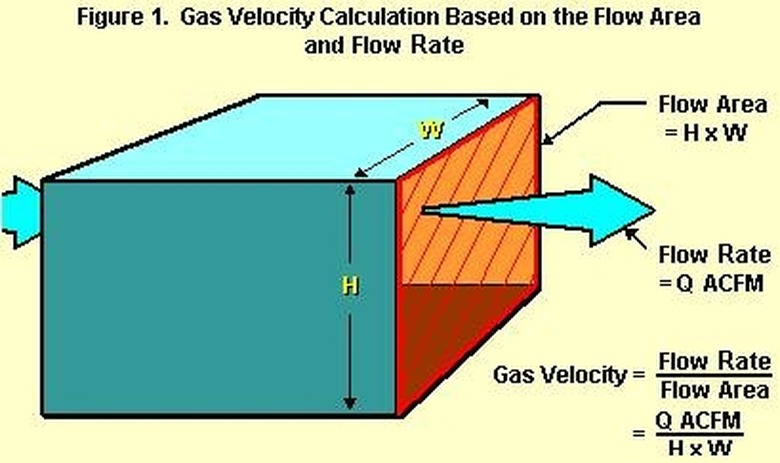How To Calculate Steam Velocity
Steam is a powerful gas and an effective heating element. To be sure, steam-turned turbines produce approximately 86 percent of electric power in the United States. From turning turbines to heating radiators, for as useful as steam can be it is still a vapor powerful enough to explode pipes and cause serious burns. Calculating the velocity of steam enables plumbers and steamfitters to gauge the appropriate thickness of pipe through which to deliver this essential gas.
Step 1
The velocity of any gas, including steam, is a measure of the flow rate divided by the total area of the flow.
Step 2
Determine the rate of flow through a given duct or pipe. This is typically measured in feet per minute–or more conventionally as ACFM (Actual Cubic Feet per Minute).
Step 3
Calculating ACFM requires having accurate measurements for pressure, temperature and humidity of current air conditions. It is calculated using the following formula: ACFM = [Standard Absolute Air Pressure / (Actual Pressure - Saturation Pressure x Relative Humidity] (Ambient Temperature / Standard Temperature).
Step 4
Calculate the flow area. For ducts, this is the width multiplied by the height. For pipes it is the height of the pipe multiplied by the width of the pipe. The flow area is noted as feet squared.
Step 5
Divide the rate of flow by the area of flow. The result should be recorded as feet per minute. This is the velocity of steam (or any gas for that matter).
Things Needed
- Paper
- Pencil
- Calculator
Cite This Article
MLA
Fonseca, Victor. "How To Calculate Steam Velocity" sciencing.com, https://www.sciencing.com/calculate-steam-velocity-4924192/. 24 April 2017.
APA
Fonseca, Victor. (2017, April 24). How To Calculate Steam Velocity. sciencing.com. Retrieved from https://www.sciencing.com/calculate-steam-velocity-4924192/
Chicago
Fonseca, Victor. How To Calculate Steam Velocity last modified March 24, 2022. https://www.sciencing.com/calculate-steam-velocity-4924192/
